We are dying, we are dying, so all we can do
is now to be willing to die, and to build the ship
of death to carry the soul on the longest journey.
D.H. LawrenceIn a previous post I talked about how important and iconic the ship was in Viking history. It meant so much for transportation, trade, and warfare, but for some (mainly wealthy people) it was also instrumental in death. Nordic peoples viewed ships as important vessels for transporting someone from this life to the next. This couldn’t have been more clear in the two places I visited in Denmark this week, and I’m not talking about the clichéd “burning boat” Viking funeral.
After spending a week in Jutland, we moved on to another of Denmark’s islands: Fyn. We are staying in Odense, which is the country’s third largest city with a population of 200,000. This is a very old place, dating to the Viking Age in fact. Odense gets its name from the fact that the earliest inhabitants worshipped the Norse god Oðinn. Just a very short drive to the city outskirts put me in a couple magical places with Viking Age ships of death: Glavendrup and Ladby.
I was told by my friend Davide, who is half Danish and born in Odense, and who is an archaeologist specializing in Vikings, that I had to see both of these places. If you follow along on my podcast, you’ll know we’ve talked to Davide before about a Viking grave and also about Viking chieftains and power. If you haven’t seen or heard the episodes, they’re definitely worth checking out.
Davide’s recommendations did not disappoint. These are must-see sites for any Viking enthusiast.
Surrounded by an otherwise unremarkable farmer’s field sits the Glavendrup stones in a grove of trees — a stone ship setting burial site that was originally 197 feet (60 m) long and 39 feet (12 m) wide, with a rune stone at the prow end that dates to the Viking Age. This is a large ship meant to carry the dead on their longest journey.
There were 11 graves found in the ship. Those graves, as well as the two burial mounds at the site which date to the Bronze Age (1700-500 BCE), attest to this site being used for burial purposes for many, many centuries. Indeed it is still an active site with several newer stones having been erected over the course of the 20th century to memorialize various people and events. We had the place to ourselves, and what could have been a very spooky experience was instead the opposite. Peaceful best describes it.
The rune stone at the end is a sight to behold. I was able to both clearly see and trace with my finger the individual runes carefully carved into it, which are still incredibly legible. The inscription is the longest on a rune stone ever found in Denmark and dates to the early-10th century.
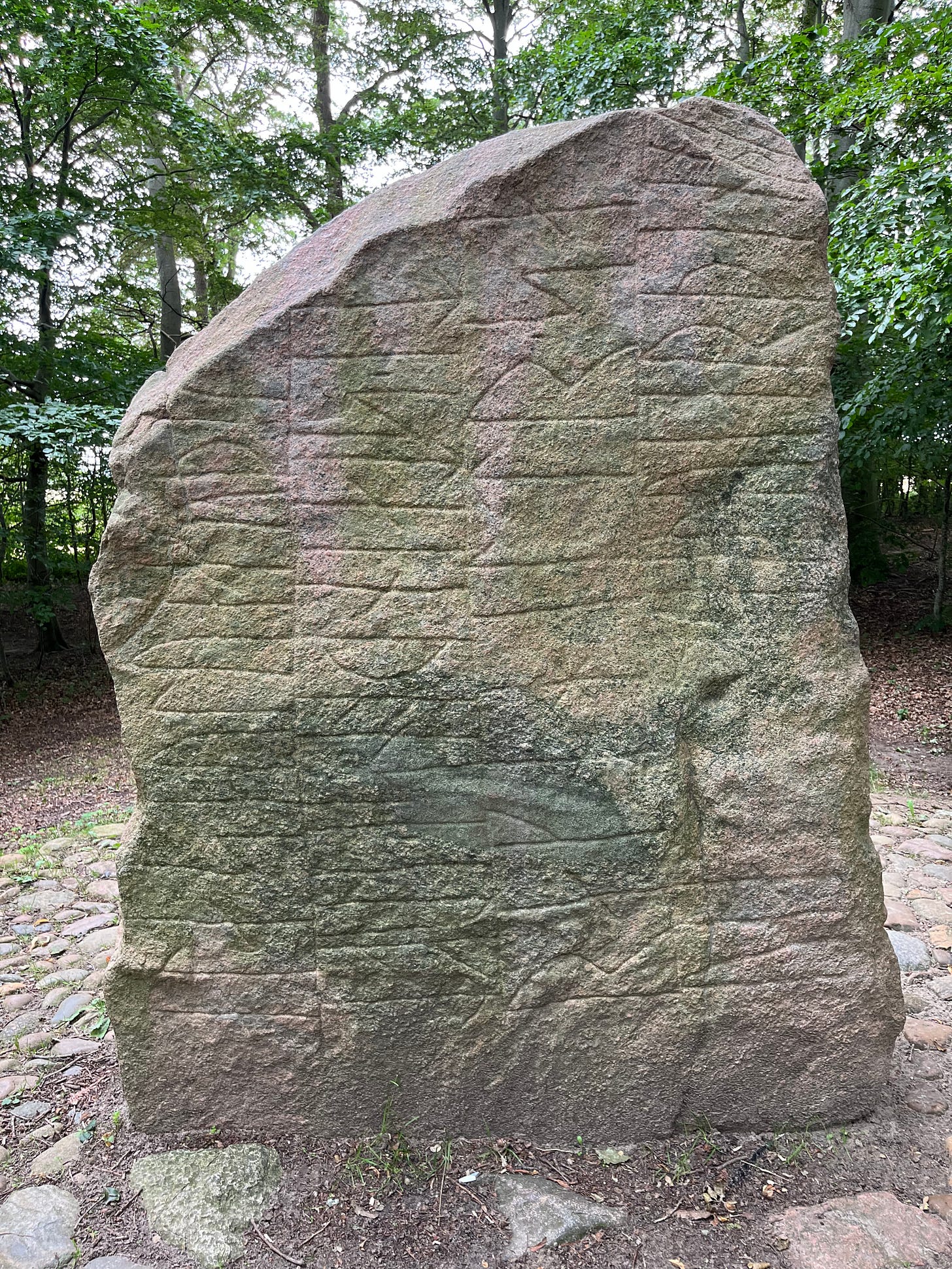
As was common with rune stones during the Viking Age, they were created as memorials to the dead. This one sits at the ship’s prow, but not all were done in this way. Often they were placed NOT at the burial site, but rather in more public places so they would be seen, read, and the dead would be remembered. This stone’s inscription is a personal dedication that follows a common formula:
Ragnhildr raised this stone in memory of Alle the Pale, priest of the sanctuary, honourable thane of the royal guard. Alle’s sons made this monument in memory of their father, and his wife in memory of her husband. And Sote carved these runes in memory of his lord. Thor hallow these runes. He is cursed who damages this stone or drags it away for use in memory of another.

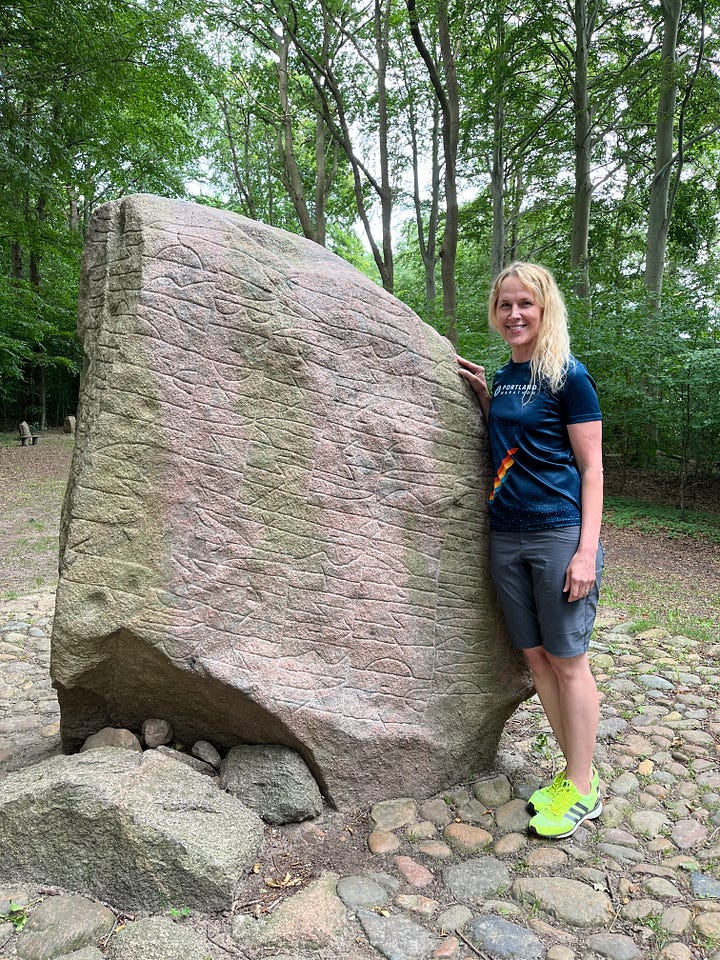
The second sacred site we visited with a ship of death is Ladby — the world’s only Viking Age burial mound that is still intact with the ship interred in it as it was originally placed, and which you can enter just as people would have done during the Viking Age. At the same time the Glavendrup rune stone was being carved and placed approximately 33 kilometers northwest, a local king was being buried in the Ladby ship, along with several sacrificed animals including several horses and dogs, as was often the custom with these types of burials. And this time I’m not talking about stones set out as a symbolic ship, but an actual ship. The ship then had a mound of earth built over the top of it.
While seemingly macabre, the recreation of the ship burial in the site’s small museum (photo above), complete with deceased king and sacrificed animals, nonetheless provided the perfect impression of what the entire scene would have looked like in its day. The king is laid out on a bed with objects such as weapons, tools, foodstuffs, and a game board and pieces nearby. At the other end lie all the animals, with the slaughtered horses being the most prominent. Like the ship itself, horses were also viewed as a means of transport both in this life and to the next.
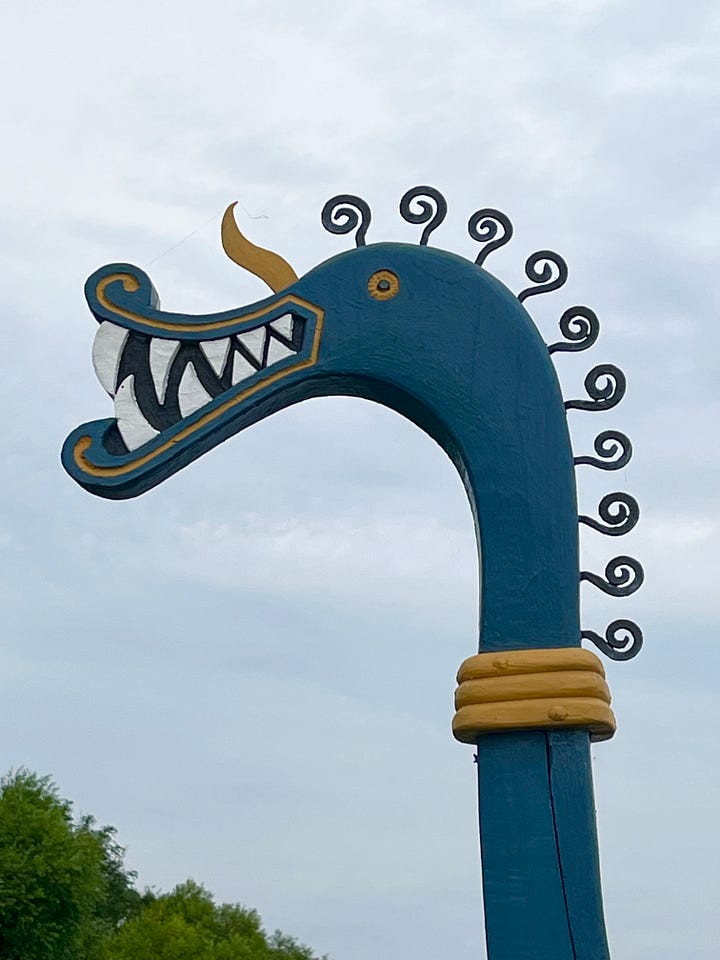
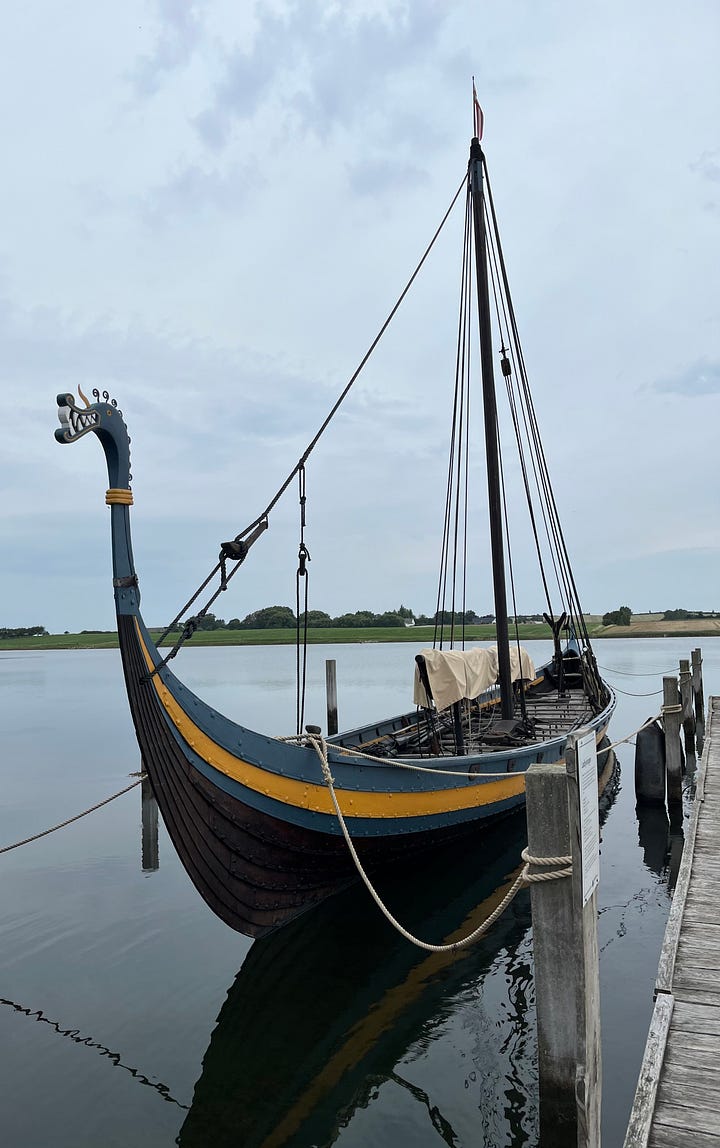
And as you will note in the photos above and below, experts have also recreated the ship and docked it in the nearby waterway so that we can understand what it looked like in its day complete with mast and sail. It measured just over 70 feet in length (21.5 m) and about 10 feet wide (3 m). If you read my post “Come Sail Away With Me” you’ll remember I had some stats in there about how, based on a surviving ship, scholars have been able to calculate how much time it took to make just one sail. THIS is the ship and sail that they studied to figure that out.

The burial mound containing the original ship has an opening on one end where I entered the sacred space. Several scholars over the years have suggested that these burial ship mounds were not simply places where the deceased was interred and then forgotten about, but rather they were places visited by the surviving kin who interacted with the dead in an ongoing way. I felt like a distant relative going to pay my respects in much the same way they must have done.
As I entered the space, the first thing I noticed is the quiet and the temperature drop. Inside the earthen mound, there’s no escaping the feeling of entering the realm of the dead. The next thing I saw when my eyes adjusted to the darkness was a sign that read “The memory in the dust speaks silently.” Indeed it does. And powerfully, for as I saw the ship laid out before me I was overcome with awe. The wood has deteriorated so what you see is the imprint of the ship in the earth exactly where it was placed 1,100 years ago.

The metal rivets that fastened the planks together and rings for the ropes along the edges are still there, as are the decorative spirals from the prow. The 4-foot (1.26 m) long anchor and its 36-foot (11 m) long chain also have survived remarkably well.
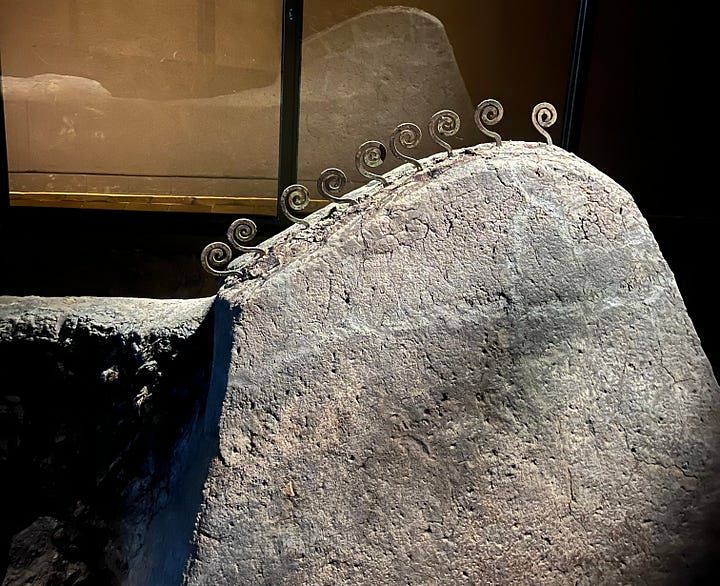
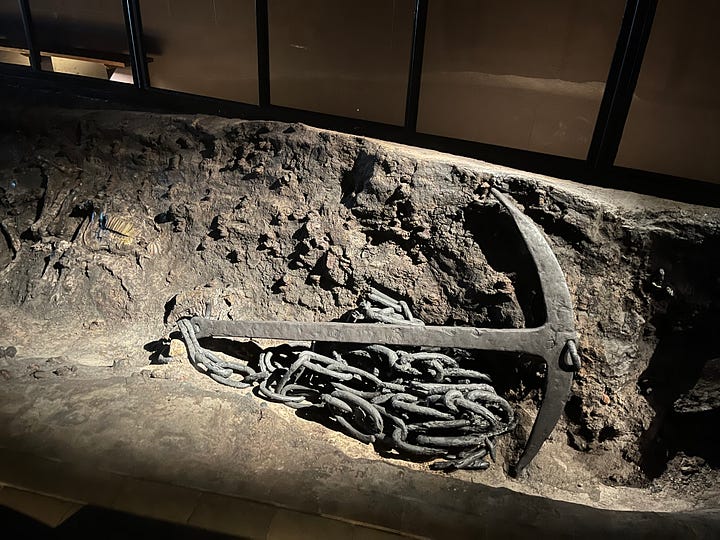
Though the king’s body was removed long ago and desecrated — potentially by political rivals — the skeletal remains of the horses and dogs are still visible inside the ship. Below you can see the piled up bones, including the teeth of one of the horses in the lighter rectangle in the middle-right of the photo.
Ladby is a modest place in a rural area, and arguably the burial mound and ship are of modest size. But the big impact of this sacred place cannot be overstated. To experience the ship of death that took one man into the afterlife in essentially the same way that his family and kin did over a millennium ago was something I’ll not soon forget.






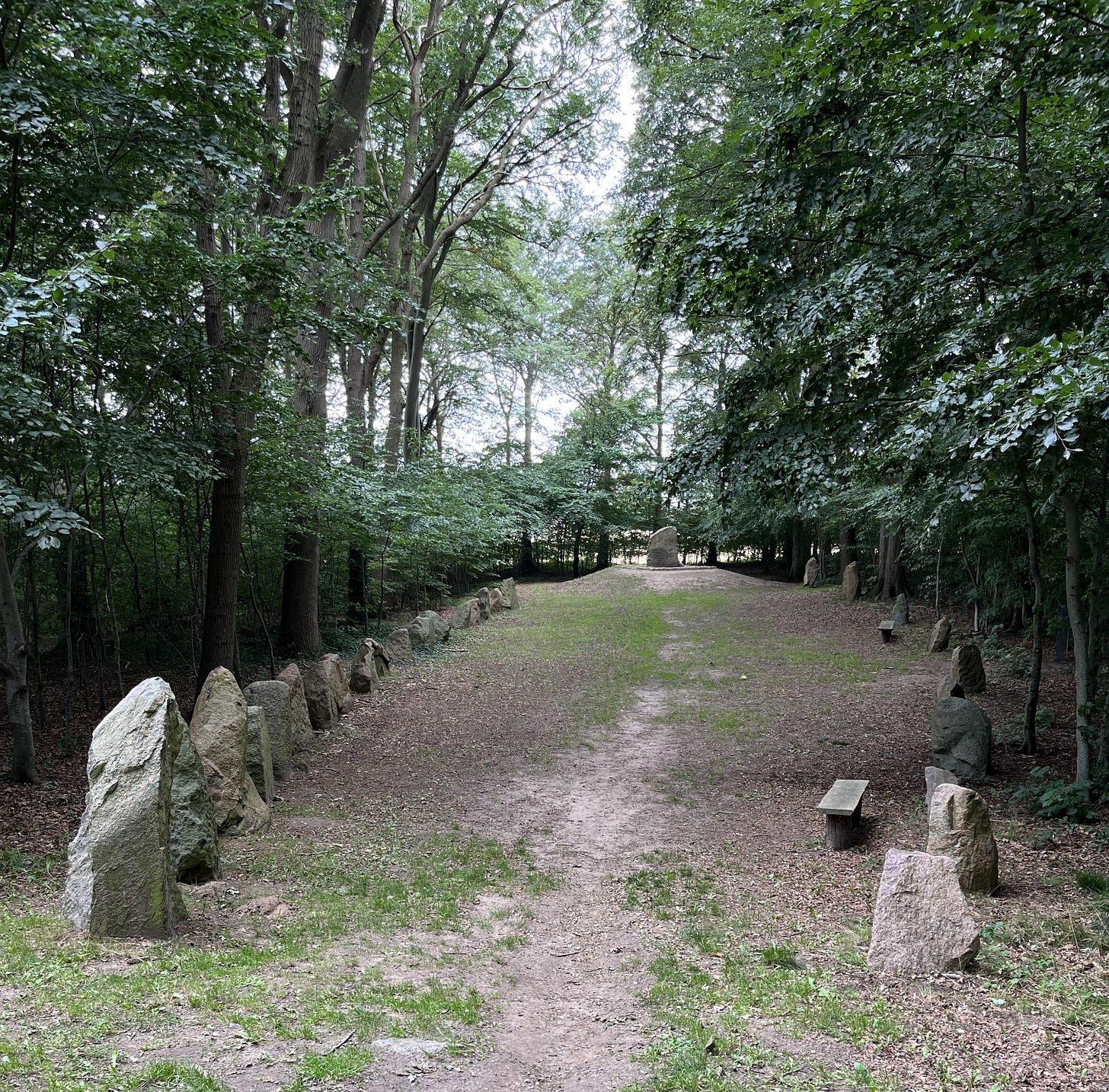
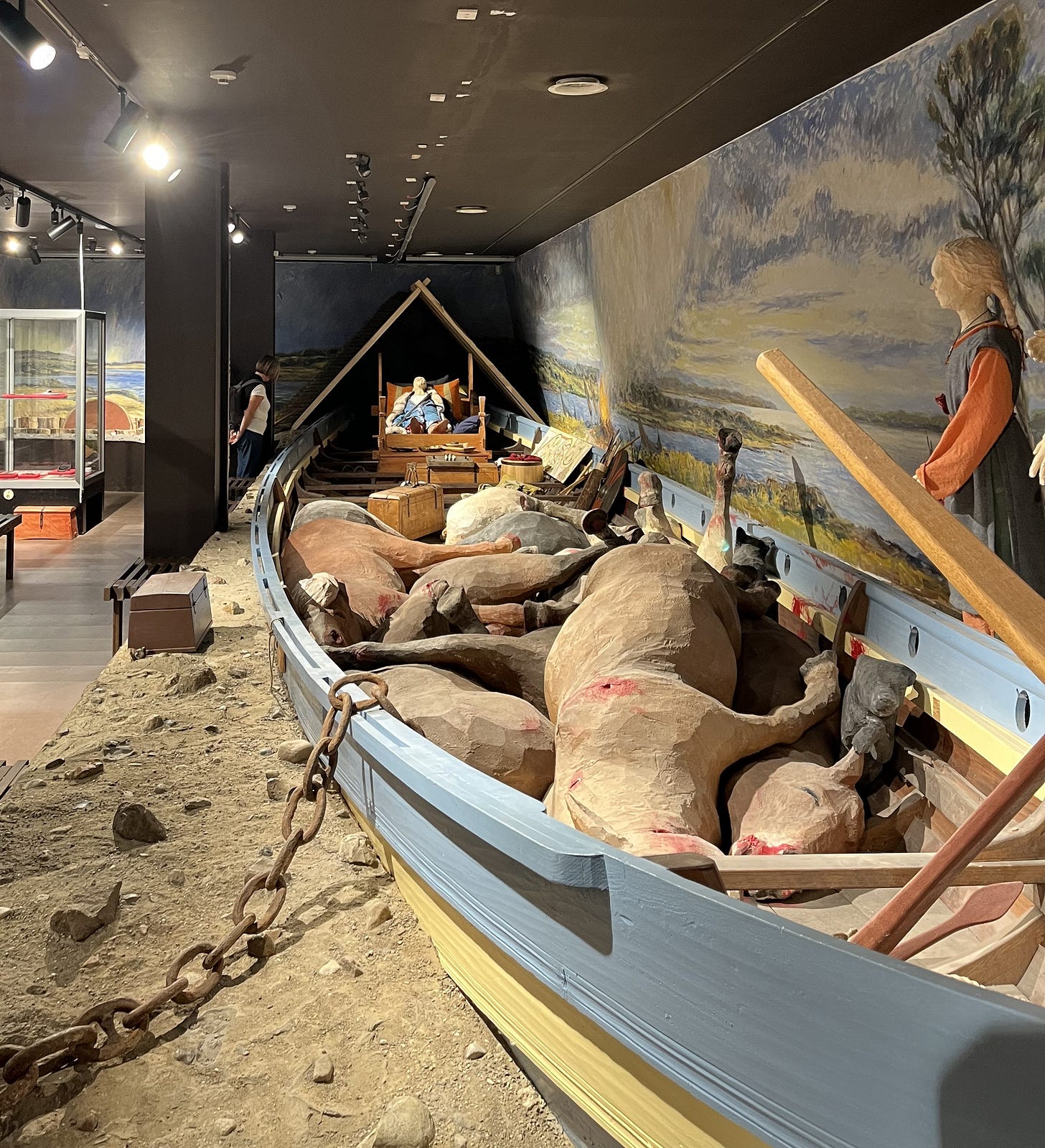


What amazing places to visit. Thank you for sharing.
Awesome, thanks!